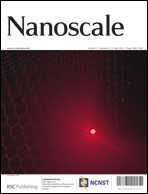BSA protected gold nanoclusters (Au25) are attracting a great deal of attention due to their unique spectroscopic properties and possible use in biophysical applications. Although there are reports on synthetic strategies, spectroscopy and applications, little is known about their polarization behavior. In this study, we synthesized the BSA protected Au25 nanoclusters and studied their steady state and time resolved fluorescence properties including polarization behavior in different solvents: glycerol, propylene glycol and water. We demonstrated that the nanocluster absorption spectrum can be separated from the extinction spectrum by subtraction of Rayleigh scattering. The nanocluster absorption spectrum is well approximated by three Gaussian components. By a comparison of the emissions from BSA Au25 clusters and rhodamine B in water, we estimated the quantum yield of nanoclusters to be higher than 0.06. The fluorescence lifetime of BSA Au25 clusters is long and heterogeneous with an average value of 1.84 μs. In glycerol at −20 °C the anisotropy is high, reaching a value of 0.35. However, the excitation anisotropy strongly depends on the excitation wavelengths indicating a significant overlap of the different transition moments. The anisotropy decay in water reveals a correlation time below 0.2 μs. In propylene glycol the measured correlation time is longer and the initial anisotropy depends on the excitation wavelength. BSA Au25 clusters, due to long lifetime and high polarization, can potentially be used in studying large macromolecules such as protein complexes with large molecular weight.

You have access to this article
 Please wait while we load your content...
Something went wrong. Try again?
Please wait while we load your content...
Something went wrong. Try again?


 Please wait while we load your content...
Please wait while we load your content...